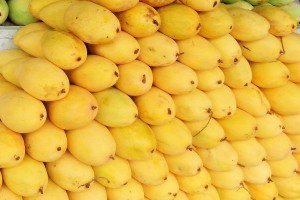Signs of a sweet mango
Identifying a sweet mango relies on several sensory cues that can help you determine its ripeness and flavor. Here are some signs to look for when selecting a sweet mango:
Color: Look for mangoes with vibrant hues. Depending on the variety, a ripe mango's color can range from greenish-yellow to golden-yellow, orange, or even red. Avoid mangoes with green patches, as they are likely underripe.
Firmness: While ripe mangoes should yield slightly to gentle pressure, they should not be too soft. A ripe mango should feel firm but give slightly when pressed, similar to the feel of a ripe avocado.
Aroma: Ripe mangoes emit a sweet, fruity aroma at their stem end. Give the mango a gentle sniff near the stem. If it has a fragrant, fruity smell, it's likely ripe and sweet. However, be cautious of mangoes with a strong, fermented odor, as they may be overripe.
Shape: Pay attention to the shape of the mango. Generally, a sweet mango will have a plump, rounded shape, rather than being too flat or too angular.
Skin Texture: A ripe mango's skin should be smooth and free of blemishes, wrinkles, or bruises. However, some mango varieties naturally develop small spots or blemishes as they ripen, so don't rely solely on this factor.
Weight: Pick up the mango and gauge its weight. A ripe mango should feel heavy for its size due to its juice content.
Variety: Different mango varieties have distinct flavors and sweetness levels. Some well-known sweet mango varieties include Alphonso, Honey mango (Ataulfo), Keitt, and Kent. Familiarizing yourself with these varieties can help you choose sweeter mangoes.
By considering these factors together, you can increase your chances of selecting a ripe, sweet mango for maximum enjoyment.
Dr. Suman Setia (BAMS DNHE PGDHHM)

